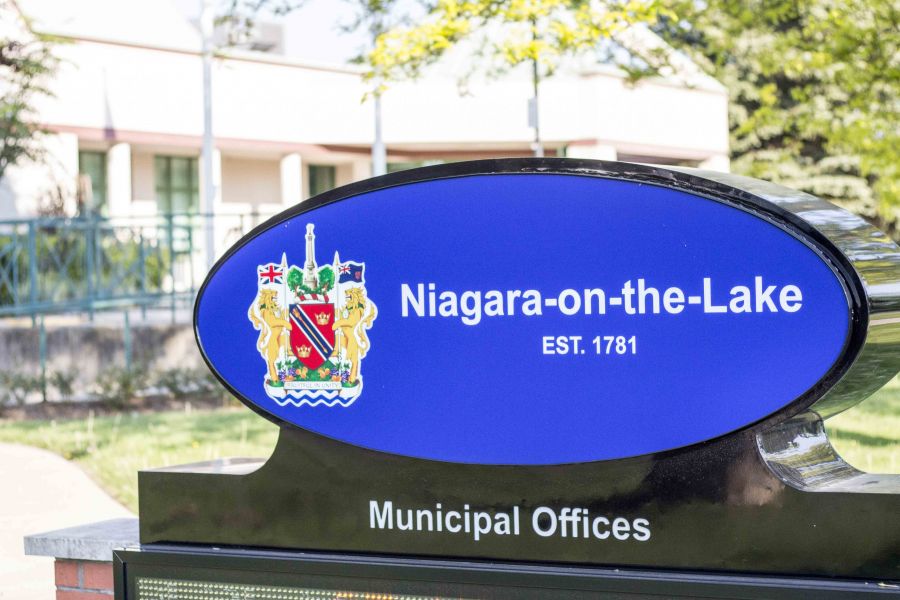Niagara-on-the-Lake residents “overwhelmingly” support a tree bylaw that would apply to private property in urban areas, and council supports having one passed before the end of August.
A report from a consulting company hired to gauge residents' interest in a tree bylaw presented to council Monday showed that of 600 people who attended an open house, answered a survey or commented online, 88.5 per cent said the Town should have a bylaw to protect trees in the five urban communities. A regional bylaw already controls cutting of trees in woodlots of rural areas, John Knott of Lura Consulting told councillors.
Almost 80 per cent of those who responded said a permit should be required to cut a tree on private property in urban areas, and 81 per cent said there should be penalties to encourage compliance.
Although the majority also said a qualified arborist should be hired for site visits before a permit could be issued for tree removal, there were comments that expressed concern about the cost.
There were some exceptions mentioned to allow for tree-cutting, including the health of the tree, hazards to property or safety issues, the tree size and the species.
Knott referred to the public response as a “really, really strong participation rate for a municipality of this size,” but said that 90 per cent of the respondents were over the age of 50, “not necessarily reflective of the entire community” as far as demographics,” he said, “just something to be cognizant of.”
In answer to a question from Coun. Betty Disero, he said he did not compare the ages of survey respondents, which had about 75 per cent between the age of 50 and 69, to the demographics of the town.
The majority of responses were also from the Old Town, he said.
Any bylaw should be clear and easy to understand, according to the public, and the fee for a permit should not be “overly high” and give residents reasons to circumvent it, Knott said.
Residents also agreed there should be a tree replacement process, with one tree planted for each removed, either on private or public property, and that the trees should be of a specified size and approved species.
A tree inventory was also a recommended by the majority, a process Coun. John Wiens suggested could be onerous and expensive.
Coun. Jamie King said he was surprised not to see heritage trees come up as part of the discussion, and Knott responded he did hear discussion about cultural heritage throughout the process, although he did not include that in the report.
As a “dabbler” of polls on social media, Coun. Paolo Miele asked about the significance of the majority of answers coming from the Old Town – he has heard from several residents who don't want a tree bylaw, he said.
The survey and open houses were well-advertised and open to everyone, said Knott. “Everybody did have an opportunity to participate.”
“This is a process step,” said Coun. Terry Flynn, suggesting the next step is to look at the tree bylaws of other municipalities. “This isn't the be-all and end-all,” he cautioned, “there are some other steps. This is just the process of gathering information.”
Gracia Janes, representing the NOTL Conservancy, said the group has a tree committee that has reviewed studies over the last three years and looked at tree bylaws in other municipalities. Given the overwhelming support the public showed for an urban tree bylaw, she asked councillors to pass a motion initiating the process. If the town already had a tree bylaw, it would have “helped enormously” to control tree-cutting on the Randwood Estate, she said. “If we had a bylaw we'd have certainty, less ambiguity if a neighbour is going to cut a tree down.”
Coun. Jim Collard's motion to receive the information in the presentation and send it to staff for a report met with some concern the process of getting a tree bylaw passed, already under consideration for more than three years, wouldn't meet a timeline that would allow it to be completed by the current council. He said a staff report was necessary to have a full discussion at council “about what we like and don't like.”
“This needs to be done yesterday,” said Coun. Martin Mazza, asking for a deadline for a report to be included in the motion.
With all councillors having supported moving forward on the issue when it has come up in the past, Coun. Betty Disero asked that the motion include a tree bylaw be approved in principal, with a report and draft bylaw prepared for the August committee-of-the-whole and council meetings. That will also allow two opportunities for the public to have a say on the draft bylaw before it's finalized.
Flynn agreed that was a realistic target, saying there are other municipalities that have bylaws that could be “massaged” for Niagara-on-the-Lake and approved by the current council.
“It's important we approve an urban tree bylaw in principal,” said Coun. Jamie King. “We've been talking about it for three to four years. This is a rather late attempt in council's term to move it forward. Every week, every month, every year we delay this we see more trees going down.”
The vote was unanimous to have a draft tree bylaw back to council by August, with answers to questions such as a fees, penalties, enforcement, and the need for a tree inventory.










